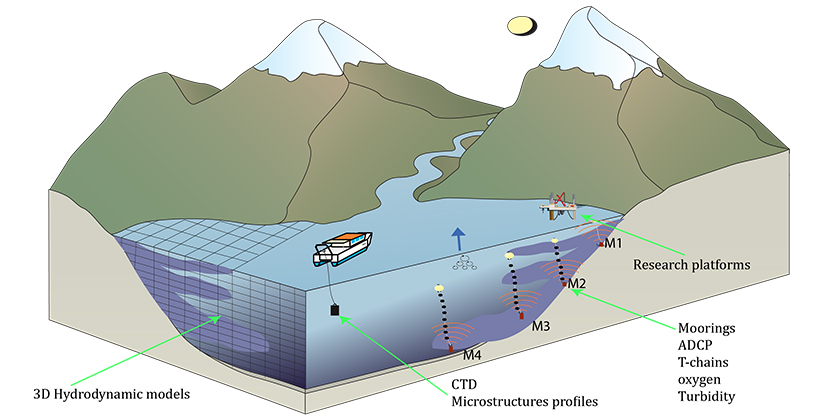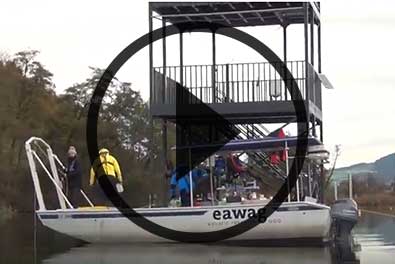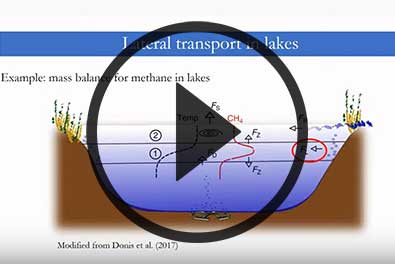Department Surface Waters - Research and Management
HYPOlimnetic THErmal SYphonS (HYPOTHESYS)

Lakes are often seen as ideal ecosystems with well-defined boundary conditions. However, most studies have focused on vertical fluxes in the pelagic main water body thereby minimizing horizontal inhomogeneity and transport. Horizontal exchanges generally play key roles in all water systems on Earth, with the most important one being the thermohaline oceanic circulation. Such gap in the integration of littoral and pelagic dynamics clearly hampers our ability to properly elucidate lake dynamics and to ultimately understand and model the whole lake ecosystem.
A central yet overlooked mechanism of horizontal transport is the buoyancy-driven nearshore flows (thermal syphons) resulting from nighttime cooling. This process transports littoral water into the pelagic zone either in the weakly stratified epilimnion, or directly into the deep interior. By shifting oxygen, nutrients and carbon from the littoral to the dilute pelagic waters, such lateral fluxes have major biogeochemical implications. This project aims at investigating the role of buoyancy-driven nearshore flows induced by night cooling in a high altitude small wind sheltered lake and a large low land lake. The approach combines extensive in situ observations analyzed with numerical models.


